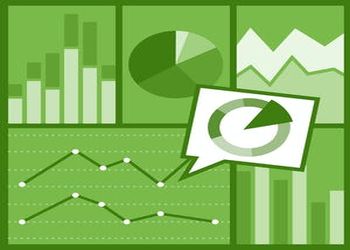Kibana or Tableau? Let’s find out! Choosing the right Data Visualization Software product has always been about correlating various options and determining the best application for your specific requirements. In this post, we’ll take a quick look at Kibana and Tableau’s overall viewership. Statistically, Tableau received a 100% successful user score in the domain of business intelligence, while Kibana earned a 100% score in monitoring tools, unlike Tableau. Following this, it becomes necessary for users to find out which tool is beneficial in a particular scenario while working on a project. We are providing the complete Tableau Certification Dumps and Practice Tests to validates Tableau Server Certified Associate exam skills.
In this feature, you can determine which application will be more relevant for your working environment by looking at their definitions, features, conditions, initiatives, and so on. Enough said, Let’s get on with it!
- What is Tableau?
- What is Kibana?
- The Difference- Kibana vs Tableau
- Features – Tableau vs Kibana
- Comparison of Prices
- Kibana vs Tableau- Both in use
- Final Thoughts
What is Tableau?
Tableau is an extraordinary software application, a popular BI analytical tool with more than just an incredible dashboard. It quickly generates compelling measurements from pre-existing data, and it provides drag-and-drop reference lines and growth projections. You can review statistical overviews and make your point with trend analyses, regressions, and correlations while using Tableau for tried and true statistical interpretation. With Tableau, you can confidently ask new questions, spot trends, identify opportunities, and make data-driven decisions. The most cherished feature of Tableau is that you’ll get answers to both the “where” and the “why’ to automatically generate interactive maps. If you looking for interview questions related to Tableau then follow the link here.
What is Kibana?
Kibana can easily visualize data that has been pushed into Elasticsearch by Logstash, es-Hadoop, or third-party technologies. It is a navigational visualization tool that is based on open source (Apache Licensed). It is a browser-based analytical tool and the Elasticsearch search dashboard. Kibana is simple to set up and use, so you can get to work right away. The program is actively engaging and simple to use while also being flexible and powerful. Elasticsearch, like Kibana, helps people see and understand data and connect to almost any database, just as Tableau does. As shared earlier, Kibana belongs to the “Monitoring Tools” category, whereas Tableau belongs to the “Business Intelligence” category. Our free Elasticsearch training is designed for anyone looking to quickly enhance their data management and analysis skills.
Complete Guide to Elasticsearch
-
-
- Bo Andersen via Udemy
- 75,097+ already enrolled!
- ★★★★★ (14,386 Ratings)
-
Elasticsearch 7 and the Elastic Stack: In Depth and Hands On
-
-
- Sundog Education via Udemy
- 25,215+ already enrolled!
- ★★★★☆ (3,654 Ratings)
-
The Difference – Kibana vs Tableau
The main distinction is that Tableau is a general-purpose analytics tool, whereas Kibana is integrated into the Elastic Search stack. Tableau can relate to almost any data source, whereas Kibana requires data to be migrated into Elastic Search first. The ability to handle big data is dependent on how big the ‘big’ is, what hardware specs are available, and so on. Kibana (with Elastic Search) is adept at managing large volumes of data, but so is Tableau if integrated to Redshift, EXASOL, Spark, or something comparable. Even if Tableau is used on hardware/VM with expansive specs or automated data engine, that explains both tools are capable to function equivalently. However, in terms of monitoring, BI command, data management, and log management- each tool has a different percentage. You might also be interested in Qlikview vs Tableau vs Power BI.
Features – Tableau vs Kibana
Immersive maps, fault diagnosis, and secure information exchange allow users to interact with data in a far more professional manner. Tableau is universally compatible, which means that, unlike Kibana, it does not need to rely on other platforms to connect with data. Check out grafana vs tableau here. To gain a better understanding, let’s look at the following features:
Kibana’s main features:
- Aids in data analysis and representation of the same analysis in the form of visualization.
- Charts that are interactive.
- Helps in the detection of data irregularities.
- Using a variety of search options such as field-level search, logical statement search, free text search, and proximity search.
- Creating a map of geospatial data.
- Generating reports
- Ensuring flexible analytics and visualization platform
- Creates a real-time summary and charting of streaming data
- Works as an Intuitive interface for a variety of users
Learn about the extensive range of Kibana training options available.
Tableau’s main features:
- Offers dynamic Parameters – Forget about the regular updates in parameters. Set it once and Tableau will update it automatically.
- Provides Viz animations –Assists users in understanding data changes.
- Access to Buffer calculations – Users can understand the data on parameters like location, distance, and measurement units.
- Has multiple data source connections – Extracted from several data platforms.
- Ensures Mobile compatibility – Users would be able to view visualizations on their mobile phones as well.
- Available for data Sharing
Comparison of Prices
Kibana:
The above-mentioned tool is available for everyone to use however they want.
To get the most out of Kibana, however, it must be combined with Elasticsearch. It charges $45.00 per month for its Elastic Cloud computing. Check out the best Kibana training courses at takethiscourse platform.
Tableau:
Tableau has released their most recent prices, which are as follows:
Tableau Desktop Personal is available for $35 per month.
Tableau Desktop Professional is available for $70 per month.
Tableau Server is available for $35 per month.
Tableau Online is available for $42 per month.
Kibana vs Tableau – Both in use
As we’ve mentioned before, Kibana is a fully accessible visualization tool that relies on Elasticsearch for data storage, which is stashed as indexes within it. That said, Kibana engages the user with the stored information as to performance indicators in Elasticsearch in order to connect with the data. With a 100% consumer ratio in log management, according to saashub, Kibana has taken the number one spot in data monitoring and log management.
Tableau, on the other hand, turns tables with its popularity in Business Intelligence and Data dashboard with a 91% consumer ratio. Many companies entirely operate using dashboards or mapping tools provided by Tableau only. Following this, you may have to consider your chances and select the best option in terms of popularity, adaptability, and functionality.
Tableau Certification Practice Tests:
Final Thoughts
In this article, both Kibana and Tableau were analyzed for better suitability reasons, with a thorough analysis of all essential issues of both apps. Takethiscourse has given you the opportunity to realize useful features of Kibana and Tableau that are critical to a company by using our distinct comparison model that provides an individual selective score to each component including main features, service and support, portable support, stability, user satisfaction, and prices. Use both or go solo, it’s your call.
Time to make a decision!








